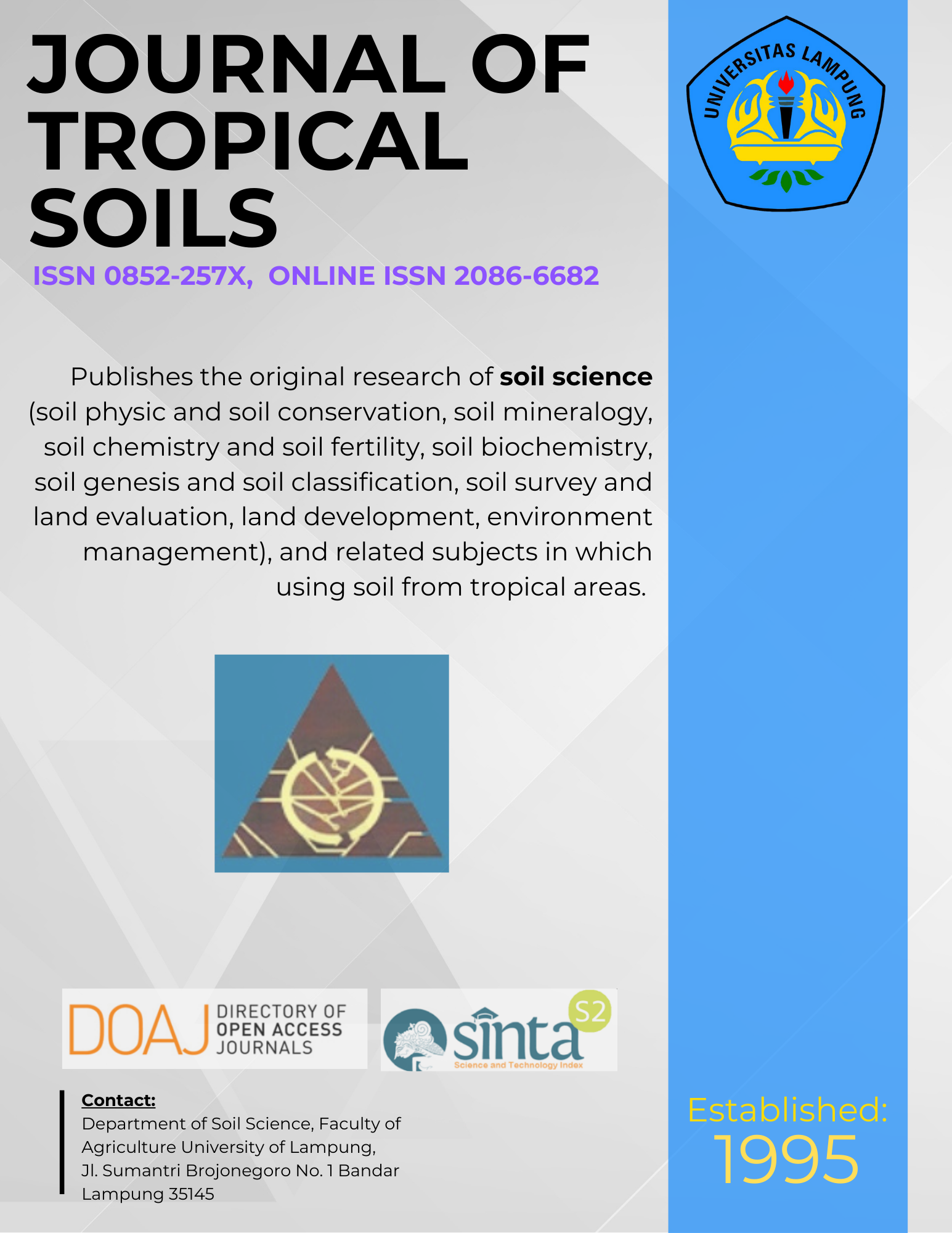Andisols from Tondano Area, North Sulawesi: Properties and Classification
Main Article Content
Abstract
Three pedons of Andisol (TN-1, TN-2 and TN-3) developed from young volcanic materials of the Lokon, Soputan, and Lengkoan volcanoes respectively in the Tondano area, North Sulawesi, were studied in the field, and 18 soil samples were analysed in the laboratory for physical, chemical, and mineralogical properties, and they were classified according to Keys to Soil Taxonomy 2003. The results indicated that all the pedons meet the requirements of the andic soil properties, and thus classified into Andisol order. Pedon TN-1 meets bulk density < 0.90 g cm-3, P retention > 85%, and (Alo + 0.5Feo) content extracted by ammonium oxalate > 2.0%, while pedons TN-2 and TN-3 meet the requirements of P retention > 25%, (Alo + 0.5Feo) content > 0.4%, volcanic glass content > 5%, and value of [%(Alo+0.5Feo) x 15.625 + (% volcanic glass)] is > 36.25. Composition of sand mineral fraction indicate that pedon TN-1 and TN-3 show andesitic to basaltic volcanic materials, whereas pedon TN-2 with high olivin content belongs to basaltic volcanic materials. Clay minerals of all the pedons was dominated by hydrated-halloysite with few of disordered-kaolinite, which indicated a little weathering of the pedons. The pedons were classified at family level as Typic Hapludand, medial, amorphic, isothermic (TN-1), Humic Udivitrand, ashy, amorphic, isothermic (TN-2), and Alfic Hapludand, medial, glassy, isothermic (TN-3).
Downloads
Article Details
Section
License for Authors
Authors who publish with this journal agree to the following terms:
- Authors retain copyright and grant the journal right of first publication with the work simultaneously licensed under a Creative Commons Attribution License that allows others to share the work with an acknowledgement of the work's authorship and initial publication in this journal.
- Authors are able to enter into separate, additional contractual arrangements for the non-exclusive distribution of the journal's published version of the work (e.g., post it to an institutional repository or publish it in a book), with an acknowledgement of its initial publication in this journal.
- Authors are permitted and encouraged to post their work online (e.g., in institutional repositories or on their website) prior to and during the submission process, as it can lead to productive exchanges, as well as earlier and greater citation of published work (See The Effect of Open Access).
License for Regular Users
Other regular users who want to cite, distribute, remix, tweak, and build upon author’s works, even for commercial purposes, should acknowledge the work’s authorship and initial publication in this journal, licensed under a Creative Commons Attribution License.

